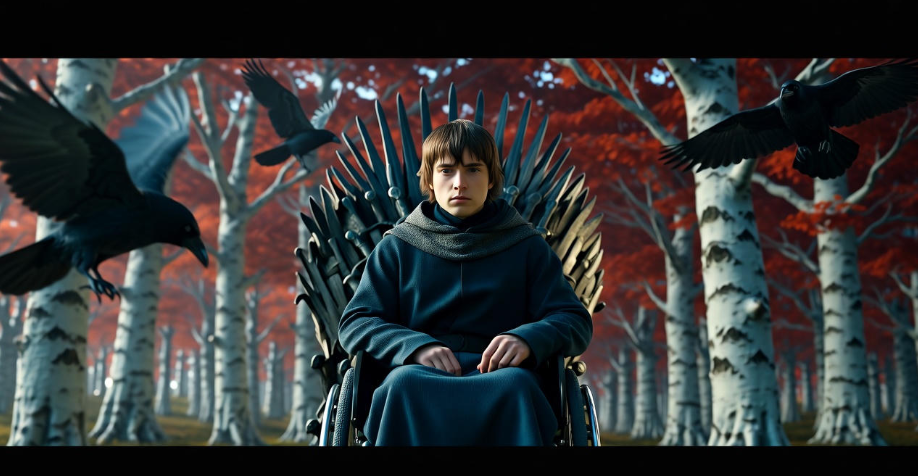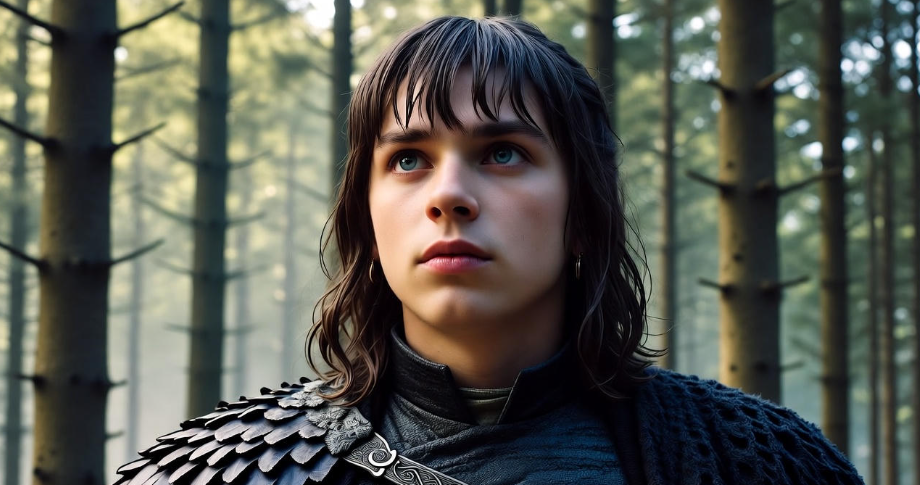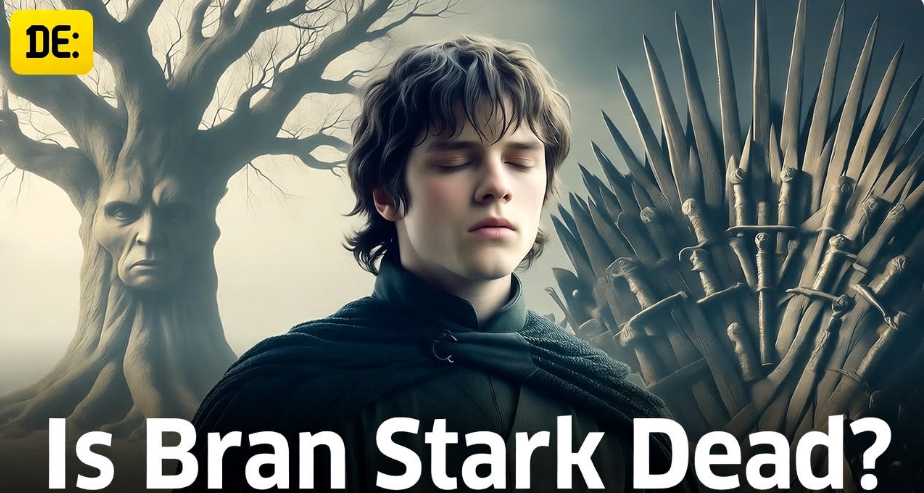Imagine a boy, barely ten, scaling the ancient walls of Winterfell with the carefree joy of youth—until a single moment shatters his world. Pushed from a tower, Bran Stark’s life in Game of Thrones takes a turn no one could predict, transforming him from a curious Stark child into the enigmatic Three-Eyed Raven. The focus keyword “Game of Thrones Bran” captures a fan obsession: how did this broken boy become the most powerful figure in Westeros? This article dives deep into Bran’s journey, unpacking his mysterious powers, pivotal role in the series, and controversial crowning as king. Drawing from the Game of Thrones TV series, A Song of Ice and Fire books, and insights from showrunners and fan communities, we’ll explore every facet of Bran’s arc—offering answers, theories, and hidden details that make his story unforgettable.
Who Is Bran Stark? A Quick Recap of His Early Journey
The Young Stark of Winterfell
Bran Stark, the second-youngest son of Ned and Catelyn Stark, begins Game of Thrones as a bright-eyed boy with a passion for climbing Winterfell’s towering walls. His early scenes paint him as curious and adventurous, a child unaware of the brutal world beyond his family’s stronghold. In Season 1, Bran’s life changes forever when he witnesses Jaime Lannister and Cersei’s illicit affair, leading to Jaime pushing him from a tower. Paralyzed and comatose, Bran survives an assassination attempt, awakening to a new reality. According to George R.R. Martin’s A Game of Thrones, Bran’s fall is a pivotal moment, setting the stage for his mystical destiny as a figure tied to the ancient magic of Westeros.
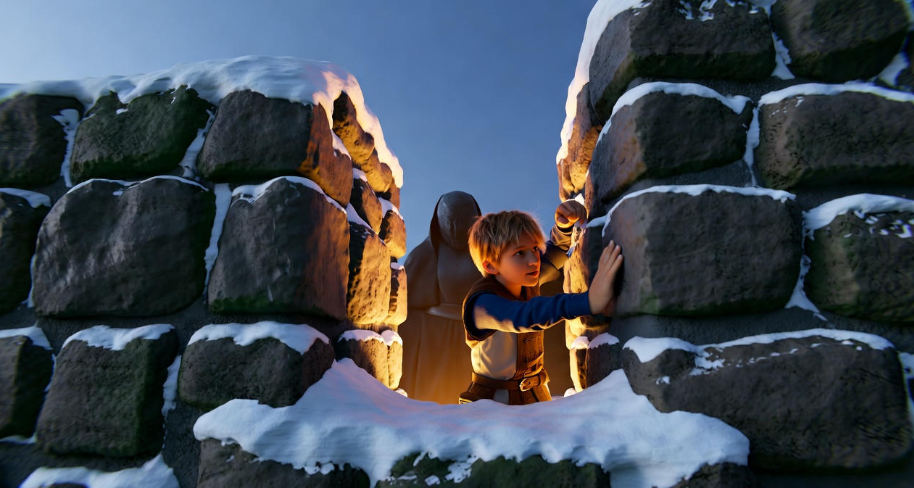
The Spark of Destiny: Bran’s First Visions
As Bran recovers, strange dreams haunt him—visions of a three-eyed crow urging him to “fly.” These are the first signs of his warging abilities, a rare gift allowing him to enter the minds of animals. In Season 2, Bran dreams through the eyes of his direwolf, Summer, witnessing events beyond his physical reach. These moments, paired with cryptic prophecies from Jojen Reed, hint at Bran’s role in a larger cosmic struggle. Fans on platforms like Westeros.org note how these early visions captivated audiences, blending fantasy with the gritty realism of Game of Thrones. Bran’s journey was no longer about physical strength but about unlocking the secrets of his mind.
The Three-Eyed Raven: Decoding Bran’s Transformation
The Journey Beyond the Wall
Bran’s quest to understand his visions leads him beyond the Wall, a perilous trek that defines his character. Accompanied by Hodor, Meera, and Jojen Reed, Bran faces wildlings, White Walkers, and harsh wilderness. Key moments, like Jojen’s sacrifice to protect him, underscore the cost of his destiny. In Season 4, Bran finally reaches the Three-Eyed Raven’s cave, a mystical weirwood sanctuary. This journey, detailed in Martin’s A Dance with Dragons, highlights Bran’s resilience and the stakes of his transformation. Fan discussions on Reddit often praise these episodes for their eerie atmosphere, cementing Bran’s arc as a standout in the series’ middle seasons.
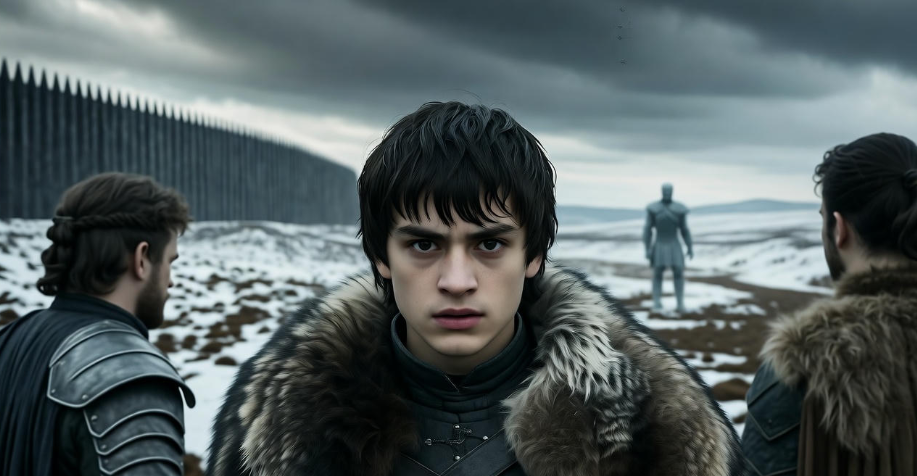
Becoming the Three-Eyed Raven
In the cave, Bran trains under the ancient Three-Eyed Raven, a figure steeped in Westerosi lore. Through grueling visions, Bran learns to harness his greenseeing abilities, witnessing pivotal moments in history. However, his training comes at a cost: the Night King marks him, leading to the cave’s destruction and Hodor’s tragic death. In Season 6, Bran inherits the mantle of the Three-Eyed Raven, losing much of his personal identity. Actor Isaac Hempstead Wright, in a 2019 HBO interview, described this shift as Bran becoming “a vessel for knowledge,” no longer the boy fans once knew. This transformation sparked debates about whether Bran remained a relatable character or became an enigmatic force.
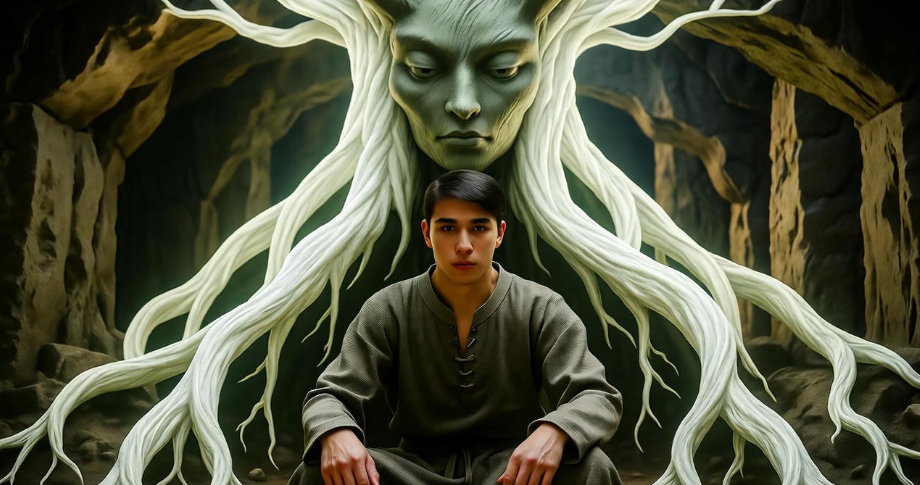
The Powers of the Three-Eyed Raven: What Makes Bran Unique?
Warging: Bran’s Connection to Animals and People
Warging, a rare ability in Westeros, allows Bran to inhabit the minds of animals and, in rare cases, humans. His bond with Summer lets him scout dangers, while his control of Hodor in critical moments raises ethical questions. For example, in Season 4, Bran wargs into Hodor to fend off attackers, a moment that showcases both power and moral ambiguity. Compared to other fantasy series, like Robert Jordan’s Wheel of Time where characters bond with animals, Bran’s warging feels uniquely grounded in Game of Thrones’ psychological depth. Fans on X often debate whether Bran’s warging into Hodor was justified or exploitative, highlighting the complexity of his powers.
Greenseeing: Seeing the Past, Present, and Future
As a greenseer, Bran can access the past and present through the weirwood network, a mystical system tied to the Children of the Forest. Iconic visions, like the Tower of Joy in Season 6, reveal Ned Stark’s secrets and confirm Jon Snow’s true parentage. But can Bran see the future? The series suggests he perceives possible outcomes, not certainties, as seen in his cryptic warnings about the Night King. Martin’s books describe greenseers as rare figures with immense responsibility, a point echoed in fan analyses on sites like ASoIaF.westeros.org. Bran’s visions add a layer of historical richness to Game of Thrones, making his role indispensable to the narrative.
The Memory of the World: Bran’s Omniscience
As the Three-Eyed Raven, Bran becomes the “memory of the world,” a living archive of Westeros’ history. This omniscience sets him apart from other characters, but it also alienates him. In Season 7, Bran’s detached demeanor—calling himself “not Bran Stark anymore”—frustrates characters like Sansa and viewers alike. Philosophically, his role raises questions about humanity and power: does omniscience make Bran a god, or a prisoner of knowledge? This duality resonates with fans, as seen in X posts praising Bran’s arc for its existential depth, though some criticize its emotional disconnect.
Bran’s Role in the Battle Against the White Walkers
The Bait in the Battle of Winterfell
In Season 8’s Battle of Winterfell, Bran serves as bait to lure the Night King, a plan that hinges on his status as the Three-Eyed Raven. Stationed in the godswood, he wargs into ravens to track the Night King’s movements, though his limited action during the battle frustrated some fans. A 2019 X post by a prominent Game of Thrones fan account called Bran’s warging “underwhelming,” reflecting a common critique. Yet, his role as a target underscores his strategic importance, as the Night King views him as a threat to his eternal winter. This moment ties Bran’s powers directly to the series’ climactic conflict.
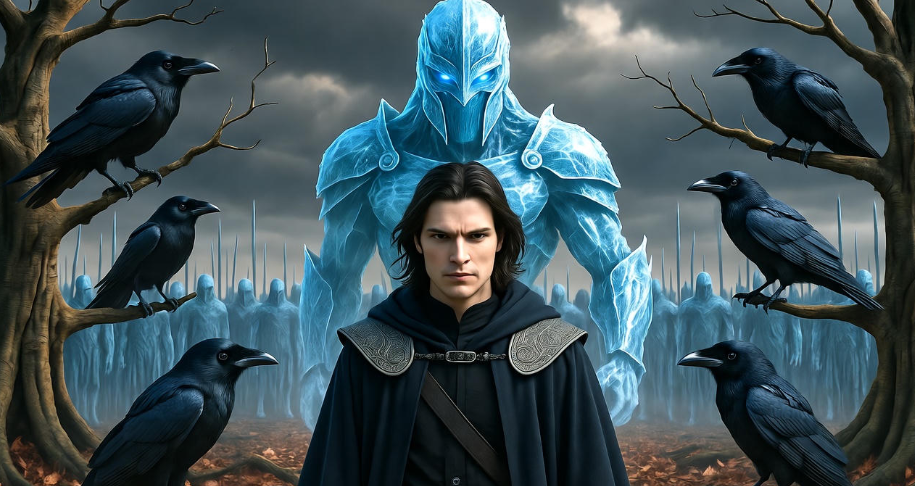
Did Bran Manipulate Events? The Puppet Master Theory
Fan theories suggest Bran orchestrated key events, like Arya’s defeat of the Night King, through subtle manipulation of time and visions. The “puppet master” theory, popular on Reddit, posits that Bran’s knowledge of the past and future allowed him to nudge events toward victory. For example, his gift of the Valyrian steel dagger to Arya in Season 7 proves pivotal. While the series offers no definitive proof, Martin’s books hint at greenseers influencing history, lending credence to these ideas. Counterarguments note Bran’s passivity, suggesting he merely observed rather than controlled. This debate keeps Bran’s arc alive in fan discussions.
Bran the Broken: The Controversial King of Westeros
The Unexpected Coronation
In the Game of Thrones finale, “The Iron Throne,” Bran Stark’s ascension to the throne as “Bran the Broken” stunned audiences. After Daenerys’s fall and Jon Snow’s exile, the lords of Westeros, led by Tyrion, choose Bran as king, citing his wisdom as the Three-Eyed Raven. This decision, rooted in his ability to embody the “memory of the world,” sparked intense debate. A 2019 X poll by a fan account showed 60% of respondents felt Bran’s crowning was unsatisfying, with many expecting Jon or Sansa to rule. Yet, the show frames Bran’s kingship as a new era, free from the cyclical power struggles of Westeros’ past. His calm declaration, “Why do you think I came all this way?” hints at a deeper awareness of his destiny, leaving fans to ponder his intentions.
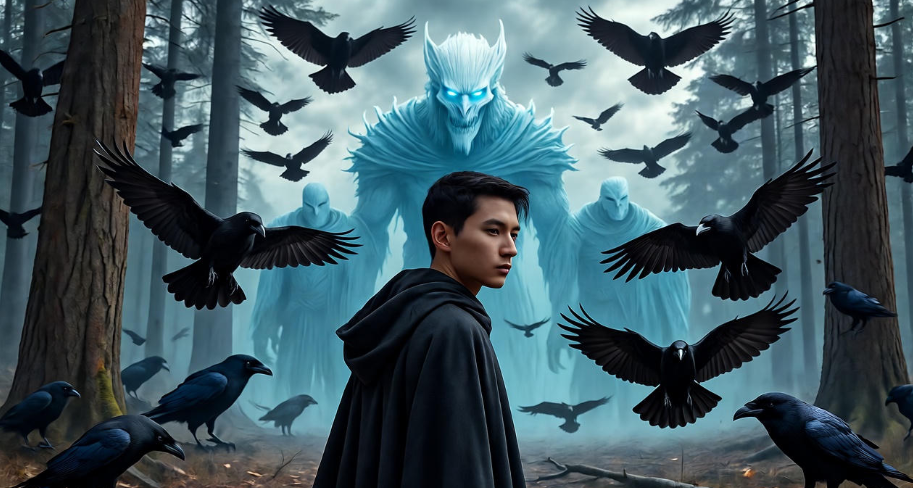
Was Bran the Right Choice for King?
Bran’s rule offers unique strengths: his omniscience ensures impartiality, and his detachment from personal ambition counters the flaws of rulers like Cersei or Daenerys. However, his emotional distance—evident in Season 8’s cold interactions—raises doubts about his ability to connect with subjects. Compared to Jon Snow’s honor-driven leadership or Sansa’s pragmatic governance of the North, Bran’s kingship feels abstract. George R.R. Martin, in a 2019 blog post, suggested the books’ ending would align thematically but differ in execution, hinting Bran’s role may be more fleshed out in The Winds of Winter. Fans on platforms like Westeros.org argue Bran’s knowledge makes him a stabilizing force, while others see his passivity as a narrative weakness. This divide underscores why “Game of Thrones Bran” remains a polarizing search term.
Hidden Details and Easter Eggs About Bran Stark
Book vs. Show: How Bran’s Arc Differs
While the Game of Thrones TV series condenses Bran’s journey, A Song of Ice and Fire offers richer detail. In the books, Bran’s training with the Three-Eyed Raven (Bloodraven in the novels) delves deeper into greenseer lore, with extended visions of Westeros’ history. Unlike the show, the books lack a Night King, shifting Bran’s conflict toward the mystical Others. Martin’s prose emphasizes Bran’s struggle to retain his humanity, a theme less explored in the series. For instance, A Dance with Dragons describes Bran’s fear of becoming one with the weirwood, a nuance absent from the show. These differences fuel speculation about Bran’s ultimate role, with fans on X eagerly awaiting The Winds of Winter for clarity.
Symbolism and Mythology in Bran’s Story
Bran’s arc brims with mythological resonance, drawing from Norse and Celtic traditions. His name, evoking the Celtic figure Bran the Blessed, suggests a blessed yet sacrificial hero. The three-eyed raven mirrors Odin’s ravens in Norse myth, symbols of wisdom and foresight. The weirwood tree, central to Bran’s visions, echoes the World Tree Yggdrasil, tying him to cosmic knowledge. Key moments—like his fall from the tower or visions in the godswood—carry symbolic weight, representing loss, rebirth, and connection to the divine. Fans on Reddit often highlight these layers, noting how Bran’s story elevates Game of Thrones into a mythic saga, making it a treasure trove for literary analysis.
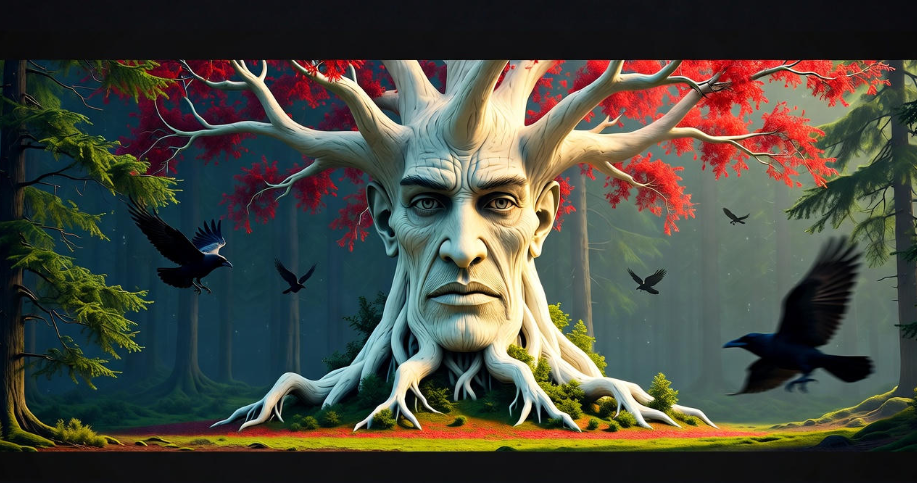
Why Bran’s Story Resonates with Fans
Themes of Sacrifice and Destiny
Bran’s journey embodies sacrifice: he loses his mobility, his companions, and ultimately his identity to become the Three-Eyed Raven. This resonates with universal themes of duty and transformation, as Bran accepts a role that isolates him from humanity. His arc mirrors real-world struggles of balancing personal desires with greater responsibilities, making it relatable despite its fantastical elements. In a 2020 HBO retrospective, Isaac Hempstead Wright reflected on Bran’s arc as “a story of growing up too fast,” a sentiment echoed by fans who see his journey as both tragic and inspiring. This emotional depth keeps readers searching for “Game of Thrones Bran” to unpack his legacy.
The Fan Experience: Why Bran Divides Audiences
Bran’s arc splits fans, with some praising its philosophical complexity and others frustrated by its execution. Supporters on X argue his transformation into the Three-Eyed Raven adds a unique mystical layer to Game of Thrones, while critics, as seen in Reddit threads, feel his detached demeanor and sudden kingship lacked buildup. A 2019 X post by a fan account summed it up: “Bran’s story is either genius or a letdown—there’s no middle ground.” This polarization drives engagement, as fans debate whether Bran was a mastermind or a narrative afterthought. To join the conversation, share your thoughts on Bran’s arc in the comments below!
FAQs About Bran Stark and the Three-Eyed Raven
What are Bran Stark’s powers as the Three-Eyed Raven? Bran possesses warging (controlling animals and humans) and greenseeing (viewing the past and present through weirwoods). As the Three-Eyed Raven, he’s a repository of Westeros’ history, with limited foresight into possible futures.
Why did Bran become king in Game of Thrones? Bran’s omniscience and impartiality made him a candidate to break Westeros’ cycle of tyrannical rule, though his selection sparked debate due to his detached persona.
Can Bran see the future, or only the past? Bran’s visions primarily cover the past and present, but the series suggests he perceives potential future outcomes, as seen in his Night King preparations.
How does Bran’s story differ in the books vs. the show? The books delve deeper into Bran’s greenseer training and internal struggles, with no Night King, suggesting a different conflict with the Others.
Conclusion: The Legacy of Bran Stark
Bran Stark’s journey from a broken boy to the Three-Eyed Raven and king of Westeros is one of Game of Thrones’ most enigmatic arcs. His transformation, marked by sacrifice, mysticism, and controversy, cements him as a figure of endless fascination. Whether you see him as a visionary ruler or an underwhelming choice, Bran’s story challenges us to ponder destiny, power, and humanity. Rewatch key episodes like “The Door” or “The Iron Throne” on HBO, dive into A Song of Ice and Fire for deeper lore, or join fan debates on X to share your take. With The Winds of Winter on the horizon, Bran’s legacy may yet evolve, keeping “Game of Thrones Bran” a vibrant topic for years to come.


